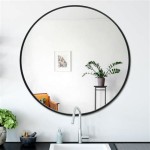How To Make Screen Mirroring Full Screen On Apple TV
Screen mirroring allows users to display the content of their iPhone, iPad, or Mac directly onto a larger screen, such as an Apple TV. While convenient, the mirrored content sometimes doesn't occupy the entire TV screen, leaving black bars around the edges. This article explains how to achieve full-screen mirroring for a more immersive viewing experience.
Understanding Aspect Ratios
The primary reason for black bars during screen mirroring often stems from differences in aspect ratios between the source device (iPhone, iPad, or Mac) and the target display (Apple TV). The aspect ratio is the proportional relationship between the width and height of a screen. Common aspect ratios include 4:3, 16:9, and 3:2. If the source and target devices have different aspect ratios, the content may not fill the entire screen.
Adjusting Apple TV Settings
Users can often adjust the Apple TV settings to accommodate different aspect ratios. This adjustment typically involves altering the "overscan" or "zoom" settings. Overscan, a legacy feature, extends the image slightly beyond the edges of the screen, potentially cropping some content but filling the display. Zoom settings allow users to adjust the displayed image size, potentially achieving a full-screen view. These settings can usually be found within the "Video and Audio" or "Display" section of the Apple TV settings menu. Consulting the Apple TV user manual for the specific model can provide precise instructions.
Checking Source Device Settings
Beyond the Apple TV, the source device itself might have settings that influence the mirrored output. On iOS devices, the "Zoom" setting under "Display & Brightness" can affect how the content is displayed on an external screen. Experimenting with these settings might resolve aspect ratio discrepancies and enable full-screen mirroring.
Using Apps with Full-Screen Support
Some apps inherently support full-screen mirroring, regardless of aspect ratio differences. Video streaming apps, for example, often automatically adjust their output to fill the connected display. If achieving full-screen mirroring proves difficult through system settings, consider whether the app being used offers its own full-screen functionality.
Considering Hardware Limitations
In some cases, achieving full-screen mirroring might be limited by hardware constraints. Older Apple TV models or source devices might not support the necessary resolutions or aspect ratios for optimal display. If troubleshooting software settings proves unsuccessful, hardware limitations might be the underlying cause.
Restarting Devices
A simple but sometimes effective solution is to restart both the source device and the Apple TV. This can resolve temporary software glitches that might be interfering with proper screen mirroring functionality.
Checking for Software Updates
Outdated software on either the source device or the Apple TV can sometimes cause compatibility issues. Ensuring that both devices are running the latest software versions can often resolve these issues and improve mirroring performance, including enabling full-screen display.
Using AirPlay Display Settings on Mac
When mirroring from a Mac, the AirPlay display settings offer options to optimize the display on the Apple TV. Users can choose to mirror the Mac's display resolution exactly or optimize for the Apple TV. Selecting the "Optimize for Apple TV" setting often results in a full-screen display.

2024 Full Guide How To Make Screen Mirroring

How To Make My Iphone Mirror Full Screen On Tv

How To Use Apple Airplay Mirror Your Iphone Mac Screen On Tv Roku And More Cnet

2024 Full Guide How To Make Screen Mirroring

Get Ipad Iphone Mirroring Full Screen On Apple Tv 3

2024 Full Guide How To Make Screen Mirroring

2024 How To Make Screen Mirroring Full Airdroid

How To Use Apple Airplay Mirror Your Iphone Mac Screen On Tv Roku And More Cnet

Use Airplay To Stream Or Mirror The Screen Of Your Iphone Ipad Apple Support

How To Make Screen Mirroring Full Easily Solved








